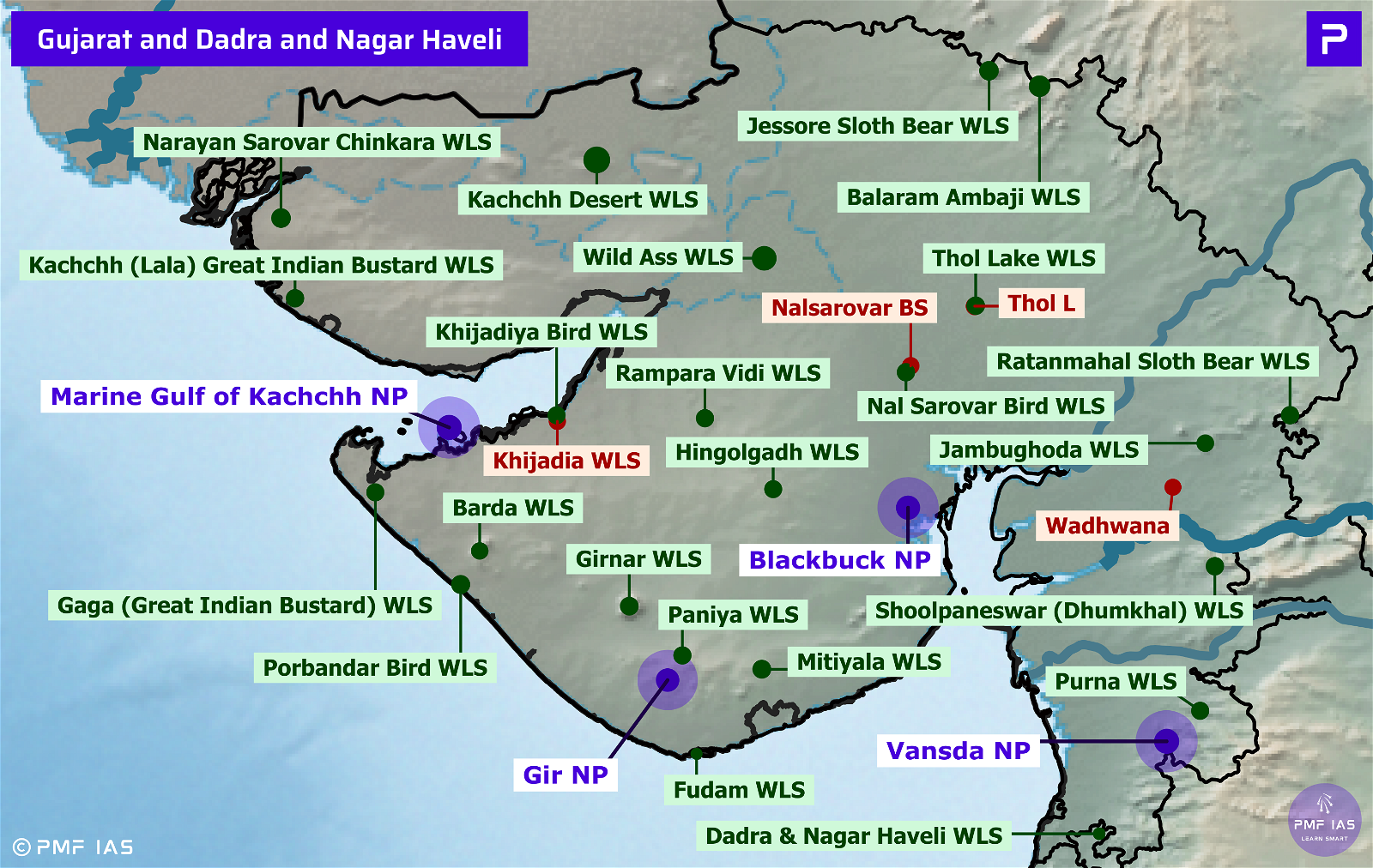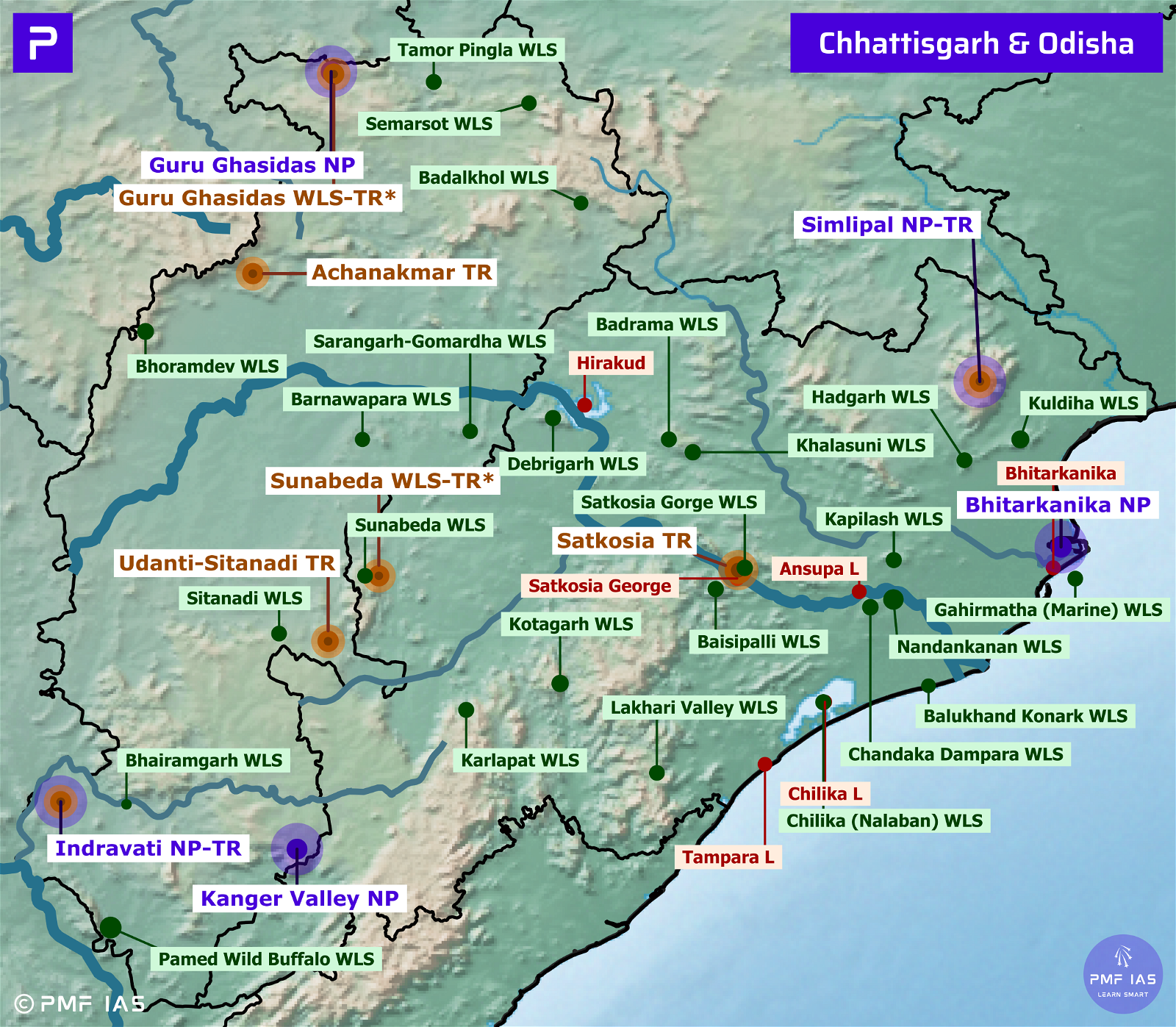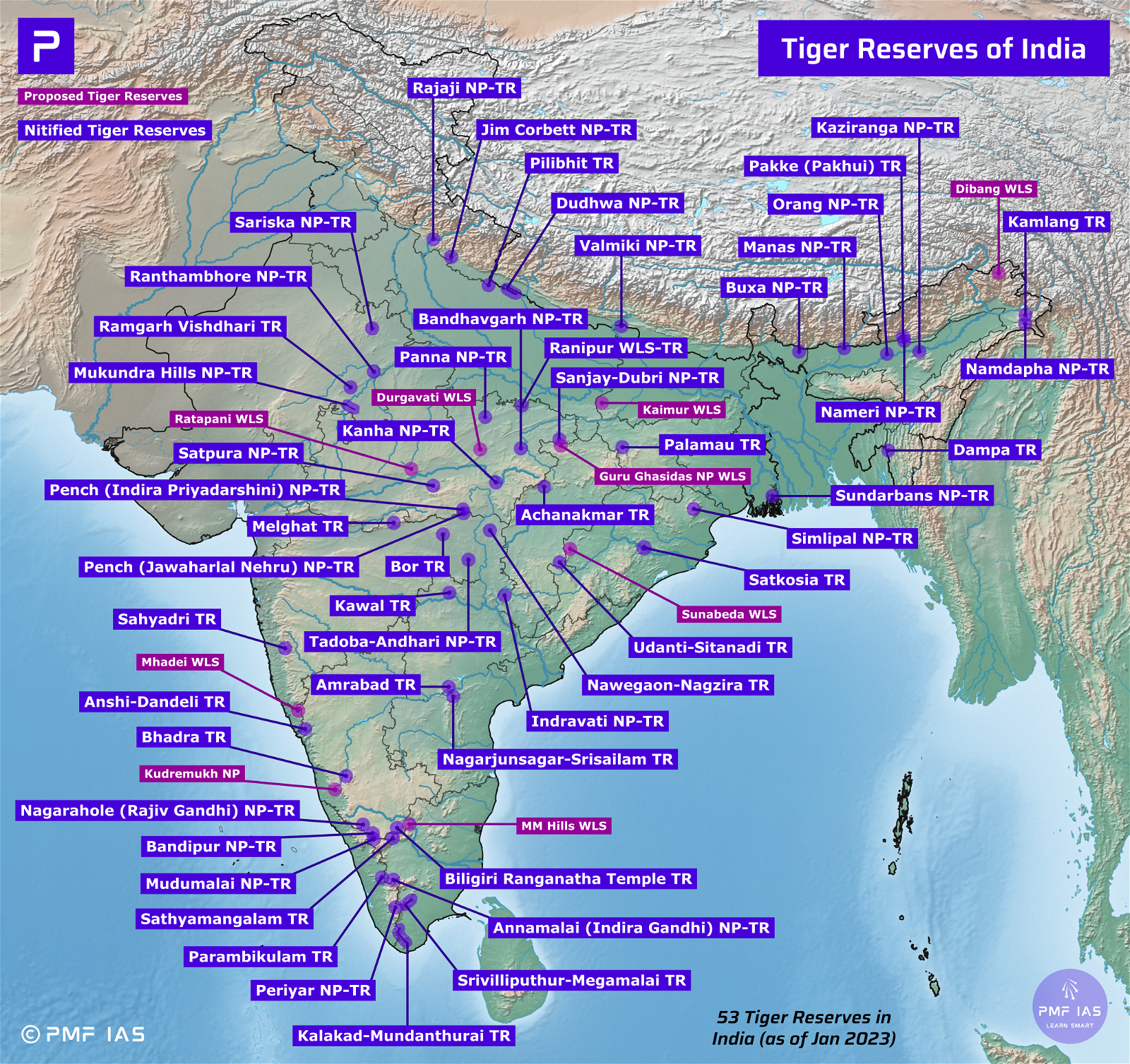
Arunachal Pradesh National Parks, Tiger Reserves and Wildlife Sanctuaries
Subscribe to Never Miss an Important Update! Assured Discounts on New Products!
Must Join PMF IAS Telegram Channel & PMF IAS History Telegram Channel
Last updated on April 15, 2024 5:52 PM
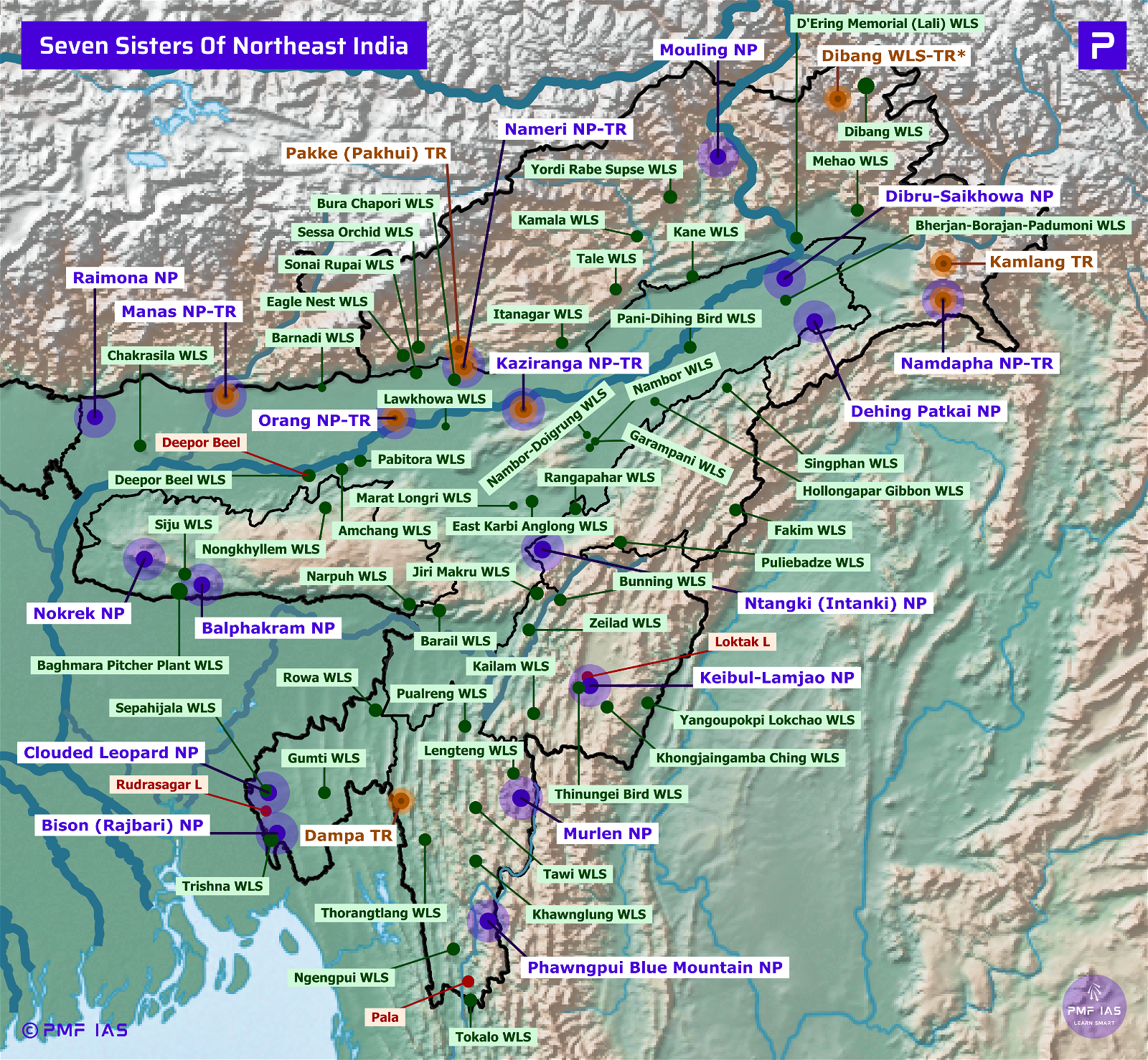
Kamlang Tiger Reserve, Wildlife Sanctuary
- It is named after the Kamlang River, which flows through it. It is located between the Lohit River & Namdapha National Park.
- Vegetation: Alpine vegetation (in upper reaches) and wet tropical evergreen forests (in lower reaches).
- Major Fauna: Bengal tiger, leopard, clouded leopard, marbled cat, snow leopard, Asian Elephant.
- Non-human primates: Capped langur, rhesus macaque, stump-tailed macaque, Assamese macaque, Eastern hoolock gibbon, and Bengal slow loris.
Mouling National Park
- It is named after Mouling peak. Mouling National Park and Dibang Wildlife Sanctuary are located within Dihang-Dibang Biosphere Reserve.
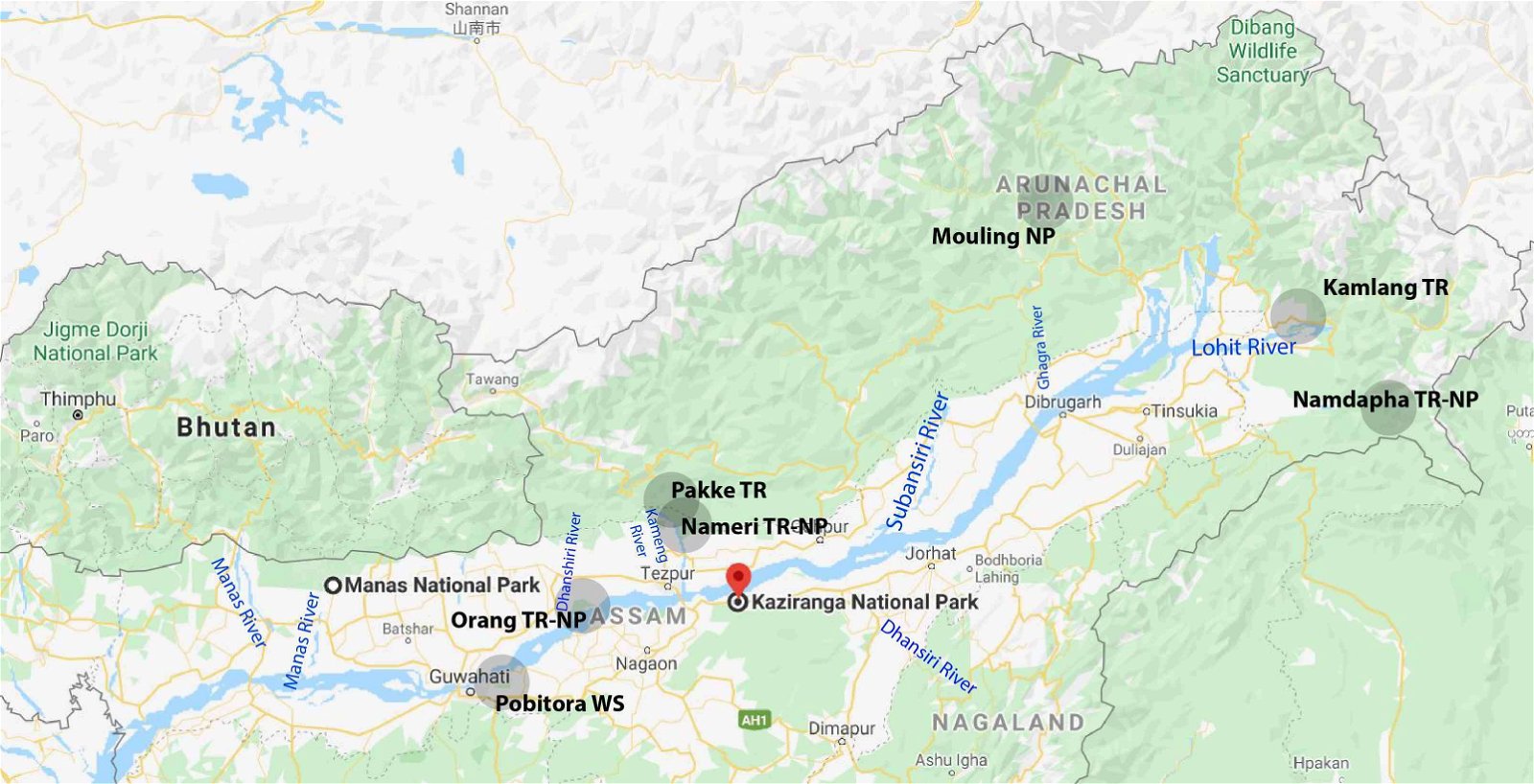
- Vegetation: tropical forests (at lower altitudes) to moist temperate forests (at higher altitudes).
- Major Fauna: Takin, Indian leopard, Bengal tiger, barking deer (Indian munjtac), serow, and Red panda.
Namdapha National Park, Tiger Reserve
- It is located between the Dapha bum range of the Mishmi Hills and the Patkai range. It is crossed by the Noa Dihing River (a tributary of the Brahmaputra River) that originates at Chaukan Pass. It is the largest protected area in the Eastern Himalaya biodiversity hotspot.
- Vegetation: Evergreen to temperate broadleaf forest.
- It is the only park in the World to have the four Feline species of big cat, namely: Tiger, Leopard, Snow Leopard and Clouded Leopard.
- It is famous for the critically endangered Namdapha flying squirrel which is endemic to the park.
- Major Fauna: Asian wild dog (dhole), Malayan sun bear, Indian wolf, Asiatic black bear, red panda, red fox, Asian golden cat, Indian elephant, wild boar, musk deer, hog deer, sambar, gaur, takin, bharal (blue sheep).
- Primates: Stump-tailed macaque, slow loris, Western Hoolock gibbon (the only ‘ape’ species found in India), capped langur, Assamese macaque and rhesus macaque.
Pakke (Pakhui) Tiger Reserve
- It lies in the foothills of the Eastern Himalaya. It is bounded by Kameng River in the west and north, and by Pakke River in the east. To the south, the sanctuary adjoins Assam’s Nameri National Park and to the west, it is bounded by Eaglenest Wildlife Sanctuary and Sessa Orchid Sanctuary.
- It is known for its Hornbill Nest Adoption Programme.
- Vegetation: Semi-evergreen and evergreen forests, and Himalayan broadleaf forests.
- Major Fauna: Bengal tiger, Indian leopard, clouded leopard, elephant, barking deer, gaur, sambar.
- Non-human Primates: Capped langur, Rhesus macaque, Assamese macaque, and stamp tailed macaques.
- Major Reptilian Fauna: Assam roofed turtle.
Wildlife Sanctuaries of Arunachal Pradesh
Eagle Nest Wildlife Sanctuary
- It conjoins Sessa Orchid Sanctuary and Pakhui (Pakke) Tiger Reserve across the Kameng River. It is a part of the Kameng ER.
Dibang Wildlife Sanctuary
- It is located within Dihang-Dibang Biosphere Reserve.
- Major Fauna: Takin, red goral, red panda.
Sessa Orchid Wildlife Sanctuary
- It conjoins Eaglenest Wildlife Sanctuary. It is a habitat for orchids.
Last updated on April 15, 2024 5:52 PM






